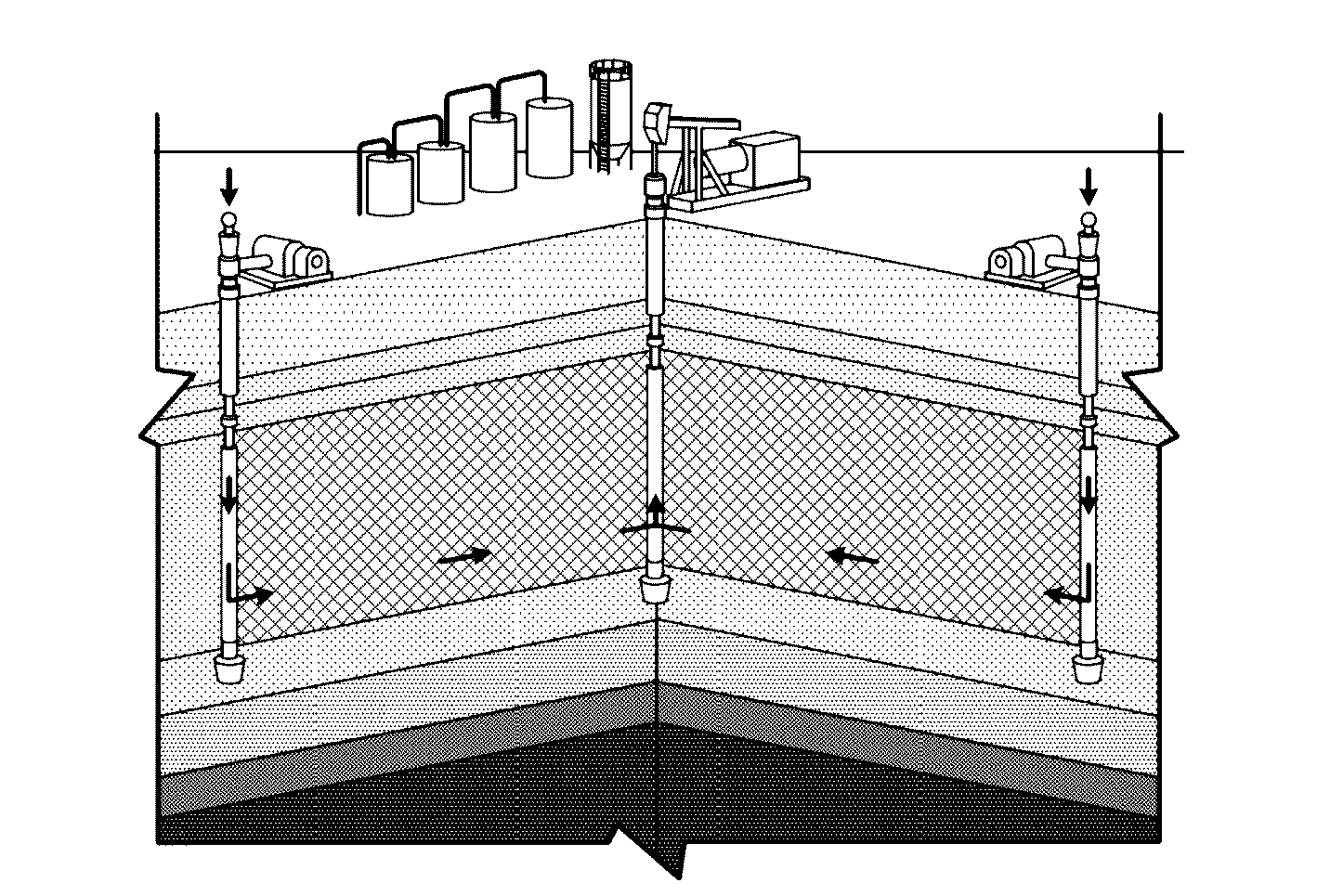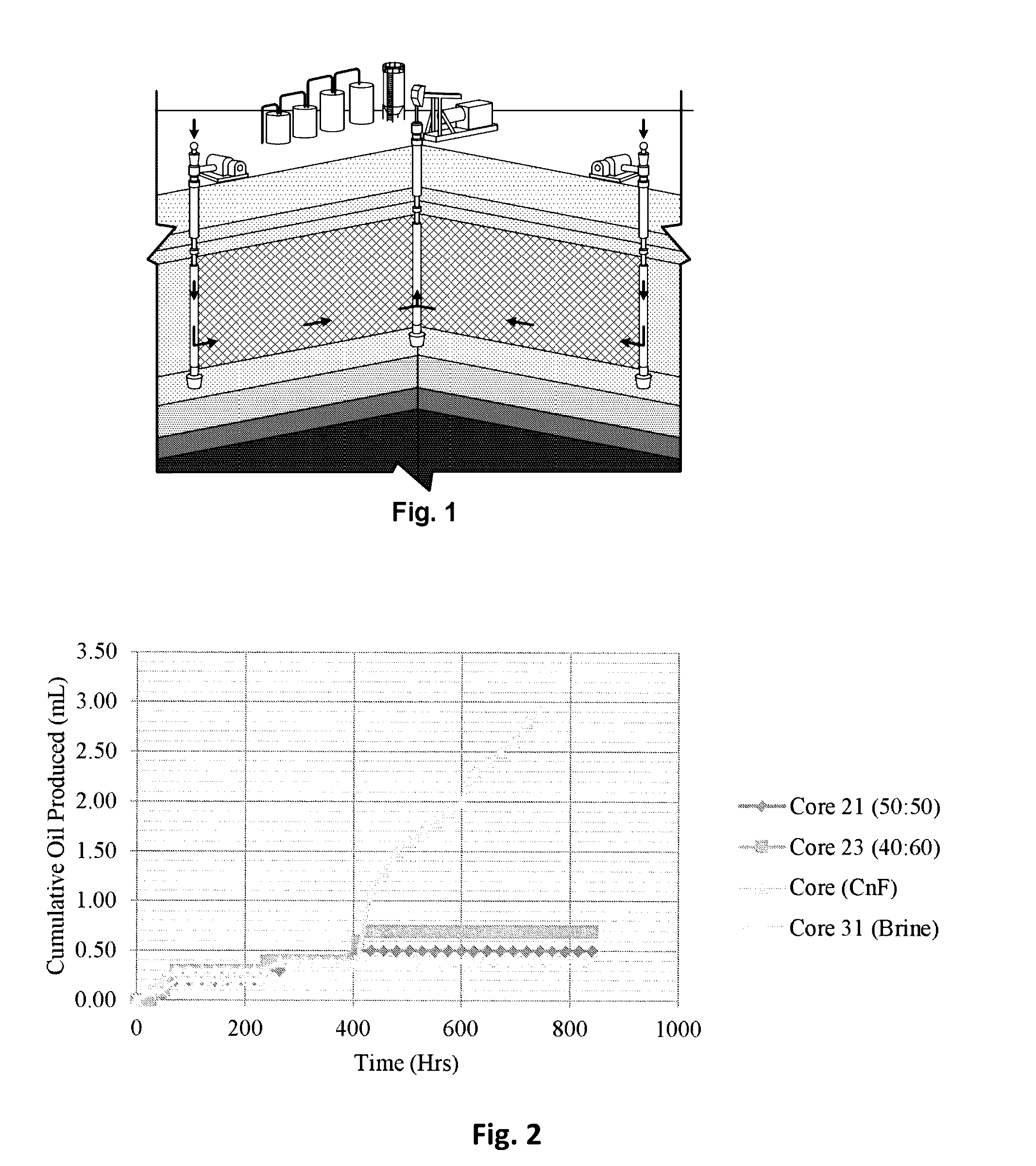Methods for enhancing oil recovery using complex nano-fluids
a technology of complex nanofluids and nano-fluids, which is applied in fluid removal, chemistry apparatus and processes, and wellbore/well accessories, etc., can solve the problem that the recovery factor achieved by conventional methods rarely exceeds 50%, and achieves enhanced recovery process, effective method of oil extraction, and increased oil extraction
- Summary
- Abstract
- Description
- Claims
- Application Information
AI Technical Summary
Benefits of technology
Problems solved by technology
Method used
Image
Examples
example 1
[0021]A spontaneous imbibition test was conducted on Tensleep core formation in order to evaluate the CnF's potential in improving oil recovery. Imbibition is the process of one fluid displacing another fluid of lower wetting properties in a porous medium. Spontaneous imbibition occurs when no external forces drive the process; it relies on gravity and capillary forces only. The objective of this test was to evaluate the effectiveness of CnF's in increasing oil recovery.
[0022]Method. Asphaltene deposition was conducted in the lab to simulate reservoir conditions. Under reservoir conditions, oil invasion after primary drainage creates contact between oil and the solid surface. Over geologic time, asphaltenes are deposited, changing wettability toward an oil-wet condition. High capillary pressure in the smallest throats and corners of an originally water-wet porous medium will prevent complete invasion, protecting areas within the pore spaces. Additionally, oil from the Tensleep forma...
example 2
[0033]In a spontaneous imbibition process, two types of porous media were analyzed with for the purpose of analyzing the behavior of oils of the type found in producing reservoirs and of the fluids injected to recover such oils in an enhanced recovery process as conditions similar to reservoir conditions. The study focused on two types of rock, pumice rock, acquired from a volcanic surface source in Arizona, and sandstone, acquired from the Tensleep formation in the Black Mountain field unit number WY-3096 53 (API #4901720221) in Wyoming's Big Horn Basin. The pumice represents a very high porosity and permeability rock that is postulated to be largely water wet, while the Tensleep sandstone represents a real reservoir, postulated to be largely oil wet.
[0034]Methods. Eleven cores of pumice were cut from samples ranging from 5 to 24 inches in diameter, and were then cut, cleaned to remove unwanted solids, and placed in an oven for 7 days to remove moisture. Finished cores ranged from ...
PUM
| Property | Measurement | Unit |
|---|---|---|
| length | aaaaa | aaaaa |
| length | aaaaa | aaaaa |
| volumes | aaaaa | aaaaa |
Abstract
Description
Claims
Application Information
 Login to View More
Login to View More - R&D
- Intellectual Property
- Life Sciences
- Materials
- Tech Scout
- Unparalleled Data Quality
- Higher Quality Content
- 60% Fewer Hallucinations
Browse by: Latest US Patents, China's latest patents, Technical Efficacy Thesaurus, Application Domain, Technology Topic, Popular Technical Reports.
© 2025 PatSnap. All rights reserved.Legal|Privacy policy|Modern Slavery Act Transparency Statement|Sitemap|About US| Contact US: help@patsnap.com



